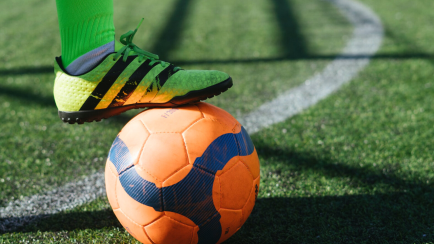Being an athlete with prescription needs isn't always easy. To get your vision to work with your favorite sport, you have two options to choose from—prescription sports goggles or contact lenses. We're here to explain which one you should pick and why.
Prescription Sports Goggles
Prescription sports goggles are the way to go for us. They help protect your everyday glasses, which you shouldn't wear for high-speed activities. If you get ASTM (sports)-certified goggles, they're more impact-resistant and flexible than regular glasses and will keep your eyes safe.
Another pro of sports goggles is customization. Our lens materials, including clear lenses, have 100% UV protection which is great if you're playing outdoor sports during the daytime. Or if you play a sport that permits a lens tint, you can get the appropriate contrast-enhancing lens and other features you might need.
Contact Lenses
Contact lenses are a great option for people who either don't like the look of sports goggles or who don't like having anything on their face. But for us, the cons outweigh the pros.
If you wear contacts but are thinking about whether you should get sports goggles, here are some tips:
- If the weight of goggles bothers you, we have plenty of lightweight frames to where you can barely tell the difference. Many of our sports goggles are also helmet-compatible for sports such as football.
- If you don't like the look, look again. Sports goggles companies have made more fashion-forward designs in recent years, and they're getting better all the time. The more people that wear sports goggles out on the field, the more that will be made, and the more likely you'll find something that matches your aesthetics.
- To prevent goggles from moving around, many of our favorite models (such as the Wiley X Youth Force collection) come with a strap or retainer to keep them in place.
- And to maximize peripheral vision, we suggest digital lenses. Digital lenses are optimized to give minimal distortion from all angles, so they're a great option for sports goggles.
Many people can't wear contacts due to health reasons, pre-existing eye issues, or contacts' incompatibility with multifocal prescriptions. Dry eyes are also a big issue with contacts, while sports goggles can have vents and anti-fog coating to keep your eyes moist without fogging up.
What if I Don't Like Either?
This is a valid concern, and it's one a lot of athletes have. Technically speaking, there are two other options—You could either not wear glasses at all, or wear your everyday glasses. Many choose one of these options, but neither is a good idea for long-term play. Not being able to see clearly impedes your ability to play. Even if you think can see the ball just fine, your reaction time will be slower, plus you won't have the advantage of seeing where the other team's eyes are looking.
But if you wear your everyday glasses, there's a very good chance they'll break. Team sports can get rough, and even if you're being careful, breaking your glasses is still a risk. If you decide you do want to wear glasses, we recommend choosing a frame specifically for sports. For frame recommendations, check out our lineup of the best prescription sports glasses. If it's a high-speed sport, we also recommend ASTM-certified eyewear. Check out our list of sports you should get safety glasses for.
We hope this blog was helpful in clearing up some of the misconceptions surrounding sports goggles. To shop all our prescription sports goggles, click the buttons below.





